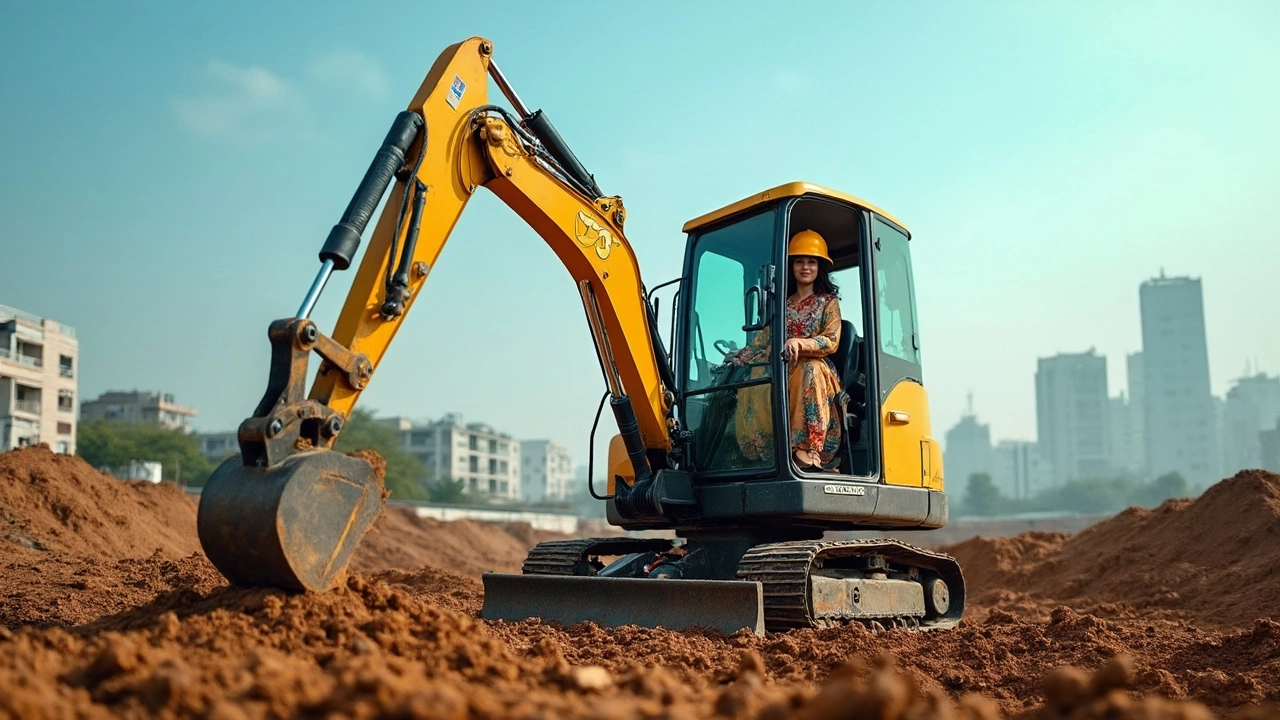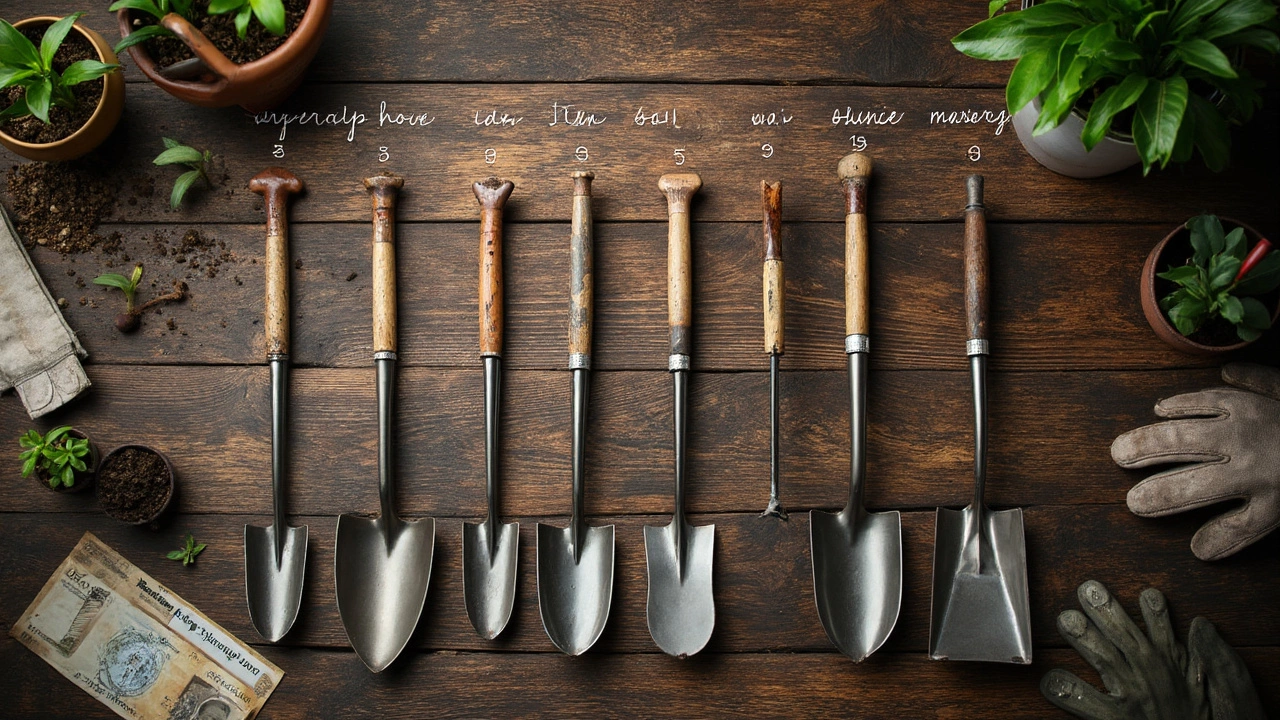Ever noticed how quickly your garden or allotment can change when you start stripping away the top layer of soil? The tool you use for this job can totally decide whether your back aches for a week or you finish before the sun sets. Soil removal sounds basic, but it’s often the first, messiest step in everything from spring planting to major landscaping projects or even house foundations. People have been fussing about how to shift topsoil since the dawn of farming, and while we probably won’t go back to stone hand tools anytime soon, finding the right gear can still feel like a bit of a puzzle. So, what’s the actual best way to peel back that upper layer?
Understanding Topsoil: Why Removing It Makes All The Difference
Topsoil is where all the action happens. That first five to ten inches houses most of your garden’s nutrients, microbes, and organic matter. Plants love it. Builders often can't stand it. If you’re putting in a new patio, re-landscaping, or starting a raised bed, sometimes you’ve just got to get it out of the way. Removing topsoil isn’t always about banishing something bad; sometimes you’re making room for better drainage, a stronger foundation, or a totally blank canvas for your next masterpiece.
Did you know that the quality of topsoil can affect everything from how well your grass grows to whether new shrubs just keel over? That’s why, when builders start a project, they’ll strip and store the topsoil—it’s worth a surprising amount. Seriously, if you see bags of 'certified topsoil' selling for a silly amount at the garden centre, it’s probably not as fresh as the stuff you’ve got in your back garden. But before you relocate it, you need to get the right tool.
Here’s something neat: not all soils are created equal. Brighton, for example, is famous for chalk, so gardens here sometimes have thin, stony topsoil that’s tricky to remove with just a spade. Clay-heavy soils in other parts of England can clog up power tools and turn digging into a sweaty endurance test. The tool you pick really comes down to the texture, depth, and moisture of your patch. With rocky soil, you need something sturdy that won’t break halfway through the first pass. With loose, rich loam, you can get away with lighter tools, and you’ll finish before you even break a sweat.
A fun fact: The UK loses around 2.2 million tonnes of topsoil every year, mostly to erosion from farming and construction. And removing it the right way can actually help preserve the soil itself by letting it be reused elsewhere. Stripping topsoil isn’t just practical; it’s a bit of a responsibility.

The Essential Tools For Removing Top Soil: Which One To Choose?
If you ask ten gardeners about the best way to strip topsoil, you’ll probably get ten answers (and possibly a few heated debates). Still, there are a handful of proven tools and machines that come up time and again. Big area, heavy-duty job? Machines are your best mate. Smaller space or tricky corners? Some classic hand tools are unbeatable.
- Spade or Shovel: Still the top pick for most home gardeners and DIYers. A garden spade is built for cutting and lifting that very top layer, and comes in all shapes—flat, pointed, wide, or narrow. The trick is to go for one with a sharp edge and a comfortable handle so you don’t get blisters. Brighton soils especially love a heavy-duty steel spade because chalk and flint will blunt cheap ones in no time.
- Mattock or Pickaxe: Perfect for when the ground feels more like concrete, or if roots and rocks are everywhere. The broader blade of a mattock can slice and loosen, making it easier to then scoop up the soil. They’re heavier, so not for the faint of heart, but sometimes that’s the only thing that makes a difference.
- Rototiller or Cultivator: Once you hit anything larger than a couple garden beds, a power tool will save your sanity. Rototillers churn up the soil’s top few inches, breaking up roots and mixing everything together. You’ll still need to clear out the loose earth, but this tool handles the grunt work.
- Trenching Shovel: When you want a narrow strip—say, for a border or a service trench—this shovel is skinny and sharp, turning what could be a slog into a steady rhythm.
- Skid Steer Loader or Mini Excavator: On the professional end, nothing beats a compact digger for removing topsoil fast. Landscapers and builders love these because they can clear whole gardens or plots in hours instead of days. The downside? They’re pricey to rent and can chew up your lawn if you’re not careful.
Some people swear by using a sturdy hoe and wheelbarrow for collection after loosening, which works great for stones and doesn’t pack the soil down as much. For really neat edges or precision, landscapers sometimes use string lines and pegs to get a dead straight finish.
Another bit of advice: Always check how wet your soil is. After a rainfall, even the best tools will get bogged down, stick, and frustrate you. Aim for soil that is just moist enough to hold shape, but not muddy, for the smoothest removal process. A good rule of thumb? Grab a handful and squeeze—it should crumble loosely instead of forming a sticky ball.
Not sure how deep to go? For new lawns or vegetable beds, stripping about 5-8 centimetres is usually plenty. Laying a new patio or foundations? You’ll likely need to go deeper. Always avoid stripping more than you need; otherwise, you could run into drainage headaches or create low spots where water pools every time it rains.

Pro Tips And Real-World Experiences: Getting It Right The First Time
No two jobs are ever quite the same, and a lot of what works comes down to common sense from those muddy days in the garden. One lesson learned the hard way: never underestimate how heavy wet soil gets. What looks like an easy hour’s work can turn into four if rain hit that morning. I know someone who tried to speed up a garden makeover with a rented rototiller after a storm, and just ended up with a machine caked in clay and boots that nearly stuck fast. Mark your calendar, check the forecast, and act fast when conditions are right.
Keep an eye on the load. One standard wheelbarrow full of freshly stripped soil weighs about 100 kilograms—not what you want to shift by hand unless you fancy joining the local rugby scrum. If you’re planning a big project, work in manageable layers and keep your back straight. Lifting with the knees isn’t just something health and safety types go on about—it genuinely stops a week of sore muscles.
Pay attention to your boundaries. Accidentally taking too much soil from near old trees or shrubs can leave roots exposed, and that’s a death sentence for anything you wanted to keep. Mark out your work areas with spray paint or builder’s line—it looks over the top, but saves you from disaster (or awkward neighbourly chats about shared boundaries).
If you’re working with existing lawns, consider rolling back the turf first and storing it somewhere cool and shady. That way, once the bulk of the soil’s gone, you can reuse it as instant green over your finished project. Just make sure to water it well before relaying.
On bigger jobs, transport becomes the real bottleneck. The fastest way to strip and remove topsoil is usually with a mechanical digger and a skip bag system. Many local waste companies offer 'muck away' services, where they drop a big bag or skip and collect it once full. It’s far safer and saves your back (and car boot) from cleanup trauma.
Looking for actual figures? Here’s a handy table to show the relative effectiveness, cost, and typical area per hour for common soil removal tools:
| Tool | Average Cost (2025, GBP) | Area Cleared Per Hour (sqm) | Skill Level |
|---|---|---|---|
| Classic Spade | £20-£40 | 5-10 | Beginner |
| Mattock | £25-£50 | 3-7 | Moderate |
| Rototiller (Hire) | £50-£70/day | 25-40 | Intermediate |
| Mini Excavator (Hire) | £150-£250/day | 80-120 | Expert |
| Trenching Shovel | £15-£30 | 1-3 (for borders) | Beginner |
Soil removal tool prices and performance can vary a lot depending on your local hire centre or garden shop. Always ring ahead and check what’s available, and ask staff for their honest advice—locals usually know which tools work best on your patch. And if you really want to make your life easy, see if any neighbours want to share the cost of a tool rental. You might even come away with a few new gardening friends.
Worth a mention: there are plenty of newer gadgets coming out that claim to do the job faster—electric soil scrapers, battery-powered cultivators, and even robotic shovels. Still, for now, nothing quite beats the tried-and-true mix of elbow grease and good timing. Sometimes the simplest tool is also the most satisfying to use.
If you ever get stuck deciding, step outside and look at your soil, not just the tools. Every plot is a bit different, and half the fun is figuring out which method fits yours best. And next time someone tells you they “just dug off a bit of lawn for the patio,” you’ll know the secret: the right tool makes all the difference.


